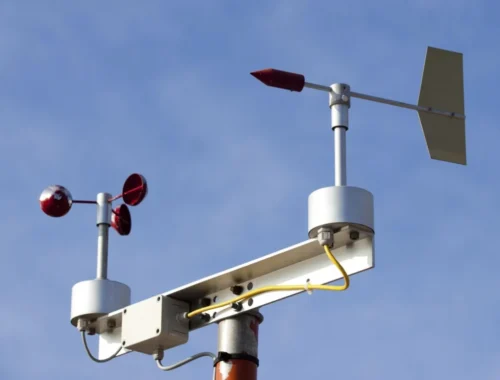The Psychological Side of Heat Exhaustion
A new study probes why athletes like Callum Hawkins sometimes push themselves to collapse
Callum Hawkins may be Scottish, but he’s not totally unfamiliar with sunshine and heat. After all, the 25-year-old finished a creditable ninth in the Rio Olympics marathon in 2016, after preparing with hot-weather training camps and heat-chamber workouts at 95 degrees and 80 percent humidity. So his dramatic collapse in the closing stages of the Commonwealth Games marathon in Australia last week, which garnered horrified headlines around the world, remains a bit of head-scratcher. With just over a mile left to run, he had a two-minute lead on the field, but he began weaving back and forth and collapsed twice before being taken from the course in an ambulance. What happened?
Heat illness is a complicated topic. As much as we’d like to know why Hawkins collapsed, the bigger mystery may be why most of the other competitors didn’t collapse. After all, they too were out there in the 82-degree heat and sunshine, pushing as hard as they could for glory. What is it that—in most cases—keeps us from pushing ourselves into the danger zone every time we exercise in hot weather? And, in rare cases when we cross the line, what goes wrong?
As it happens, a neat study in the upcoming May issue of Sports Medicine offers a window into some of these questions. A team at the University of Portsmouth, led by exercise physiologist Jo Corbett, put cyclists through a series of 20K time trials in cool and hot conditions, with and without competition. In random order, they did a cool solo trial (at 59 degrees), a hot solo trial (86 degrees), and a hot trial against a competitor.
The competitor in the head-to-head trial was supposedly on a stationary bike next to the volunteer (hidden behind a screen), with their respective positions displayed in a virtual-reality race environment. But that was just a trick. In fact, the volunteers were racing against a virtual representation of their own previous performance from the cool trial. Numerous previous studies (not to mention a near-infinite accumulation of personal experience) have shown that competition boosts performance. There’s research, for example, that suggests your perception of effort is lower when you’re racing against others, because part of your attention is focused on your competitors rather than fixated on your own suffering. But is this effect enough to trump the performance-sapping effects of heat?
In a word, yes. The average finishing times were significantly faster in the cool solo ride than in the hot solo ride (35:31 versus 36:10), but in the hot competitive ride, the cyclists managed an average of 35:17, statistically equivalent to their cool ride. In fact, 11 of the 18 cyclists in the study were faster in the hot competitive ride than in the cool solo ride. In itself, this isn’t particularly surprising or shocking, but there are some interesting wrinkles in the details.
One of the key points is that in the hot solo trial, the cyclists adopted a slower pace relatively early on, while their core temperatures were barely above normal. So they weren’t slowing down because their blood was boiling and their muscles were cooked—instead they were slowing down to prevent that from happening. Over the past decade, there’s been lots of debate about whether this preemptive slowdown is imposed on you unconsciously, or whether it simply reflects common sense and prior experience. (My favored answer in debates like this is “Maybe there’s a bit of both,” but a more honest one would be “I don’t know.”) Either way, it seems clear that your perception of how hot you are is as important as your actual temperature in determining your initial pacing behavior.
And this is what’s particularly intriguing: If you look at straightforward physiological measurements like core temperature, the cyclists hit higher temperatures when they were racing head-to-head in the heat than when they were soloing in the heat. That’s expected, because they went faster and generated more power. But their perceptual measures during those two trials, measured at six different time points, were essentially identical. They rated their perceived effort the same; their “thermal sensation” (how hot they felt) was the same, as was their “thermal comfort” (how pleasant or unpleasant that heat felt). So racing against a competitor created a disconnect between how hot they were and how hot they felt. Hawkins may have had plenty of experience training and pacing himself in hot conditions, but in the excitement of racing for an international championship gold medal, his perceptions were no longer reliable.
There’s one other intiguing wrinkle from the study. Before the cycling started, the subjects completed a series of psychological questionnaires. Two traits turned out to have some predictive power. Those with a higher propensity for deliberate risk-taking behavior tended to have the biggest increase in core temperature in their head-to-head trial compared to the solo hot trial. And those with the highest self-reported resilience had the biggest improvement in race time between those two trials. So if you’re mentally tough, highly motivated, and enjoy BASE jumping in your spare time, you’re the one the medics should be keeping an eye on at at hot-weather marathon.
That said, I think it’s worth reiterating what I said at the top: tons of highly motivated risk seekers push themselves to the max in hot weather on a regular basis and don’t develop heat illness. Our pacing mechanisms and behaviors, however they operate, generally do an excellent job of keeping us safe. Often when an athlete does suffer heat illness, there turn out to be other underlying factors at play—a recent viral infection, the use of certain drugs like amphetamines, poor clothing choices, and so on. But sometimes, for reasons that we don’t fully understand, even the most highly trained and well-prepared athletes go down. So if you’re racing in hot conditions, pace yourself cautiously, and if things start feeling funny, slow down and seek assistance.
My new book, Endure: Mind, Body, and the Curiously Elastic Limits of Human Performance, with a foreword by Malcolm Gladwell, is now available. For more, join me on Twitter and Facebook, and sign up for the Sweat Science e-mail newsletter.
You May Also Like

Monkey Mart: A Primate Paradise for Shoppers
March 20, 2025
ユニットハウスのメリットとデメリットを徹底解説
March 21, 2025